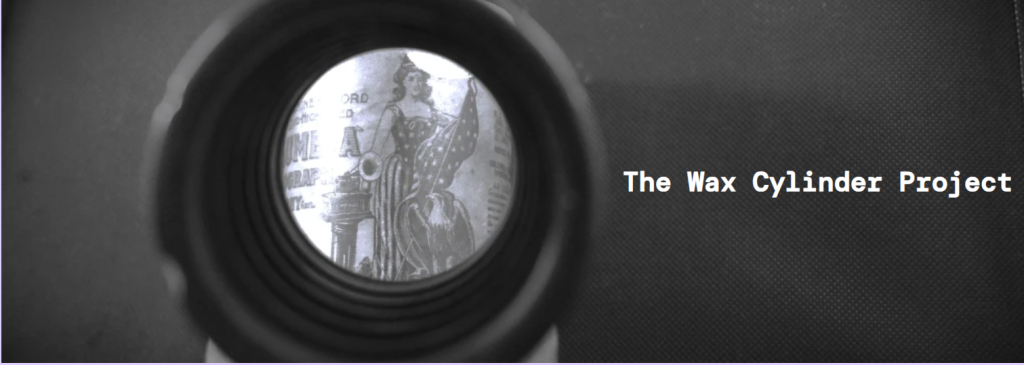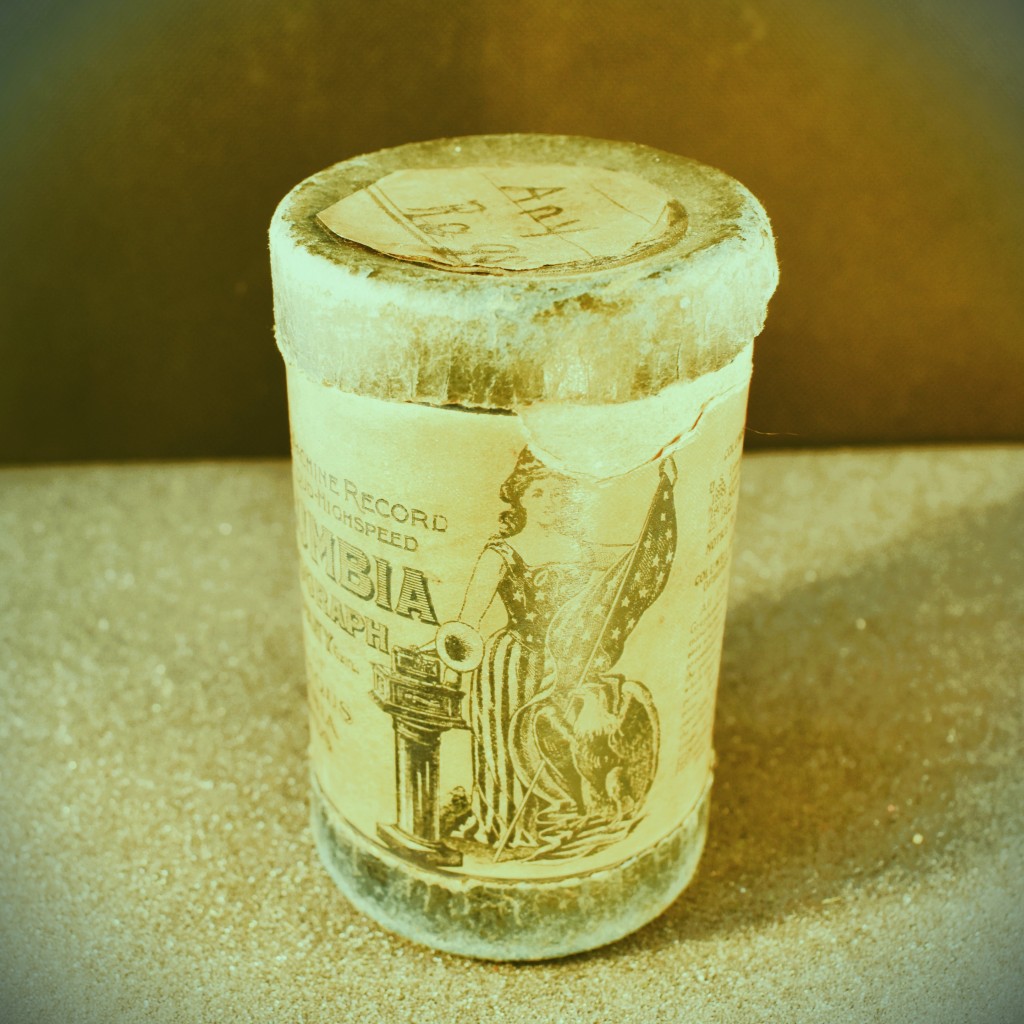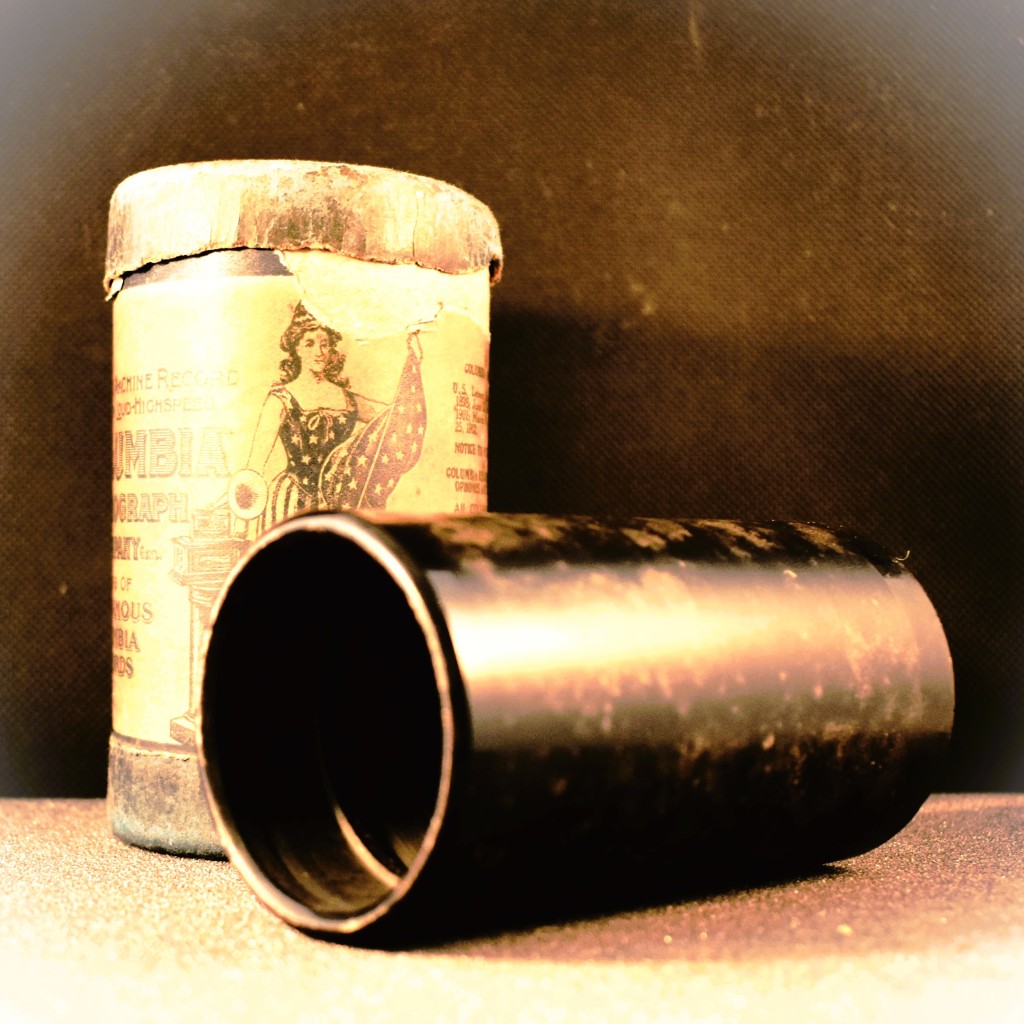
For more information about the individual track sin the project, see related posts below:
- Wax Revolution 9
- The Undoubted, Unimpeachable Mr Jocelyn
- Ingersoll at the Tomb of Napoleon (coming soon)
- Tahitian Field Recording
- Aye, Mama! (coming soon)
- Alpine Specialty with Yodel (coming soon)
- Harp Bagatelle with Soprano (coming soon)
- I Let us Down
- Chiming Bells
- Dedication to Sarah Bernhardt

I’m nearing the end of a project I’ve been working on sporadically for the past year or so. In a previous release (the second volume of my Top Floor Sessions), I’d been recording music for use with some Dictaphone recordings which I’d made over the course of the past decade or two. They featured sounds from beach holidays, conversations, rainfall, family games, etc. I really enjoyed working with these recordings, using them for both inspiration and accompaniment. Accordingly, I was looking for some more records or samples to work with which would be in some way similarly obscure, not to say also ‘royalty free’. For this, I needed to find some very old recordings, copyright generally extending to up to 70+ years in the UK.
For old recordings, you can’t get any older than the earliest recorded media format, which was the Edison phonograph cylinder.

In 1877, Edison was using tin foil as a recording medium but failed to develop it beyond it being a curious novelty. Around 1888, the use of engraved wax instead of indented tin was pioneered by Alexander Graham Bell with a gramophone which in turn led to Edison to redevelop his own wax cylinders.
Early wax cylinders, rotating at over 100rpm, initially only survived around 20 plays before degrading, but later versions could last a lot longer. To help preserve them, the hard-wax cylinders were sold in cylindrical card boxes with a cotton lining.

Their demise was heralded by the popularity of grooved phonograph disc records, this probably being the first example in a long line of new media formats superseding another!
Being so fragile and long since out of production, many of these old cylinders are extremely rare. Thankfully, some of these recordings have been preserved and are now available for use under a Creative Commons License. The UCSB Cylinder Audio Archive:
As of January, 1, 2022, all cylinder recordings made prior to December 31, 1922 are now in the public domain in the United States and many places elsewhere. These cylinders can be freely downloaded and used for whatever purpose, commercial or non-commercial.
All of which is good news for Carnoe’s Mummingbirds! Over the past year, I’ve been listening to and sampling these recordings while composing music for use with them. As the Wax Cylinder rapidly approaches its completion, this blog will discuss some of these recordings and my work with them.
Along the way, I’ve used recordings which have included an opera singer, a great orator, a harpist, bell ringers, English language teaching, a yodeller, Tahitian singers, home recordings and more. Some recordings I chose to reject based on aspects which would be considered unpalatable today, such as recordings with racist content or performers or, in one case, the re-enactment of a real person’s mental breakdown for entertainment purposes! At other times, I simply discarded a record because I just couldn’t find the music to match the recording.

So, embrace all the tinny hiss, the pop and the crackle. Cock your ear to that phonograph horn – it’s time to bring the wax cylinder into the 21st Century!
Link to the album on Carnoe’s Mummingbirds Bandcamp site:
